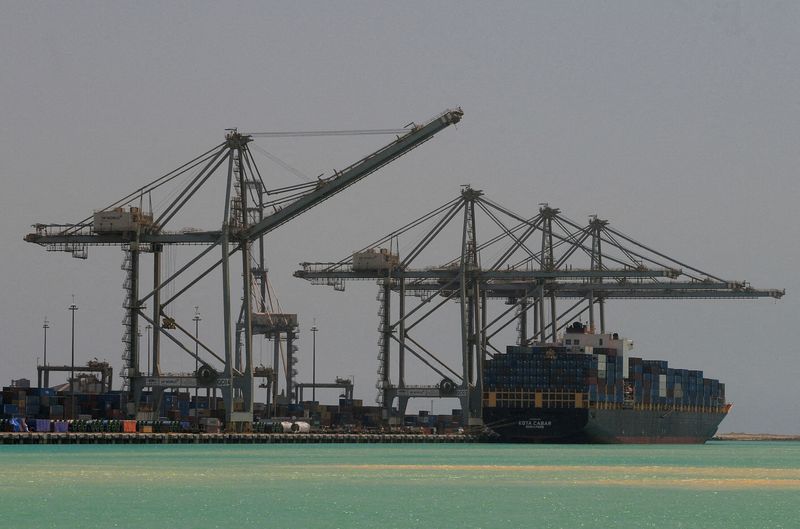
By Aidan Lewis (JO:LEWJ) and Patrick Werr
CAIRO (Reuters) – Egypt’s Suez Canal Economic Zone (SCEZ) has invested $3 billion on infrastructure over the past few years and has plans to invest a similar amount over the next few years as it works to attract investors, its chairman said in an interview.
The zone, a collection of six ports and four industrial areas alongside, or near the waterway, has been given special legal and tax advantages to benefit from the vast amount of international shipping passing by.
While government-run, it is administratively separate from the canal. Attacks on Red Sea shipping by Yemen’s Houthis, who say they are acting in solidarity with Palestinians in Gaza, has diverted traffic from the Suez Canal, causing revenue to fall by nearly $3 billion in the first half of 2024 to $1.83 billion.
The political instability in the region has emphasised the advantage of diversification and hedging, Gamal El-Dein said, adding investments have paid off, with a boom in new projects over the last 24 months.
“We have been able to attract more than $6.3 billion of investments in various sectors and logistics and ports, and 164 projects, seven of which were in our ports, and the remainder factories and logistics sites within the zone,” Gamal El-Dein said, adding that he expected this number to grow sharply.
“We’re looking for something much higher than this,” he said. “Already this year, we have attracted close to $1 billion — in the first four months of the fiscal year,” which began in July.
MORE CONTAINER BERTHS
Among these have been the East Port Said container port that includes a general cargo terminal about to be operational imminently, a roll-on, roll-off car terminal expected to be running by January and a container terminal due to be operational by April.
Some 2.4km (1.5 miles) of container berths at East Port Said have been running for several years, but the SCEZ is now in talks with operators to contract for an additional 1 km said Gamal El-Dein, who took up his post as chairman in August 2022.
The SCEZ hopes that private investors will help build much of the new infrastructure.
The zone attracted more than 160 projects over the last two years, Gamal El-Dein said.
“Now we realize that we need to invest more in infrastructure to serve future projects beyond the 160,” he said. “Before these 160 projects, we had something in the tune of 300 companies. So effectively, in two years, we increased by almost 50%.”
One example is desalination. The zone has one desalination plant at Sokhna on the Red Sea, just south of the southern entrance to the canal.

“We’re working on developing one more at Sokhna specifically for the shared facilities for the green hydrogen industry, so to ensure that they receive the right amount of necessary water for that industry,” with a first phase of around 250,000 cubic meters per day. The tender will be released soon, with construction expected to be completed in 2-4 years.
The zone has been setting itself up as a centre for green fuels, including green hydrogen, green ammonia and green methanol, having until now signed 15 framework agreements and eight memoranda of understanding for potential projects.
This post is originally published on INVESTING.




